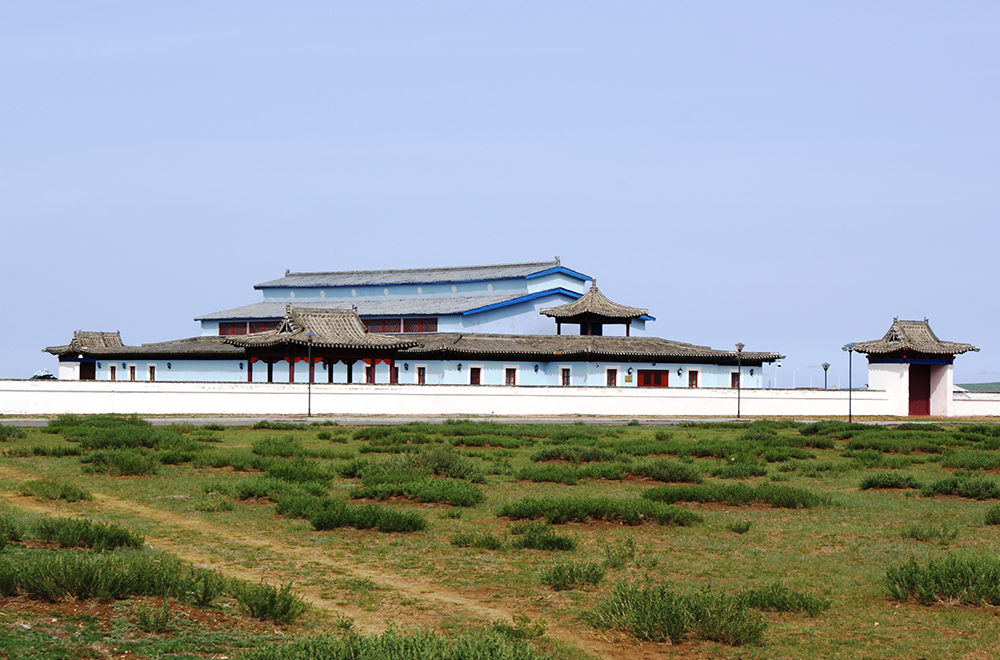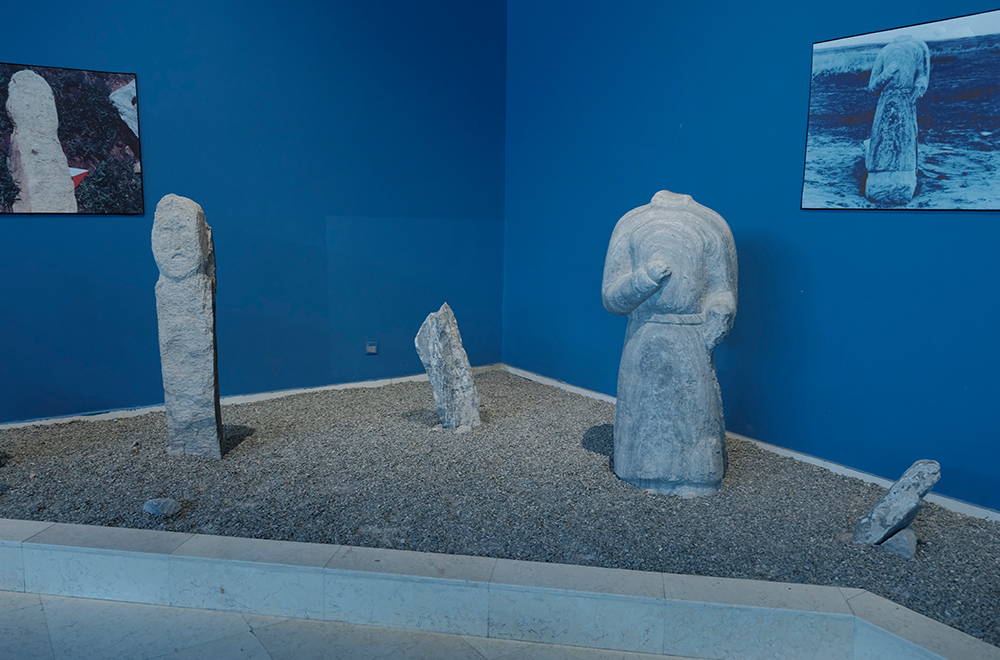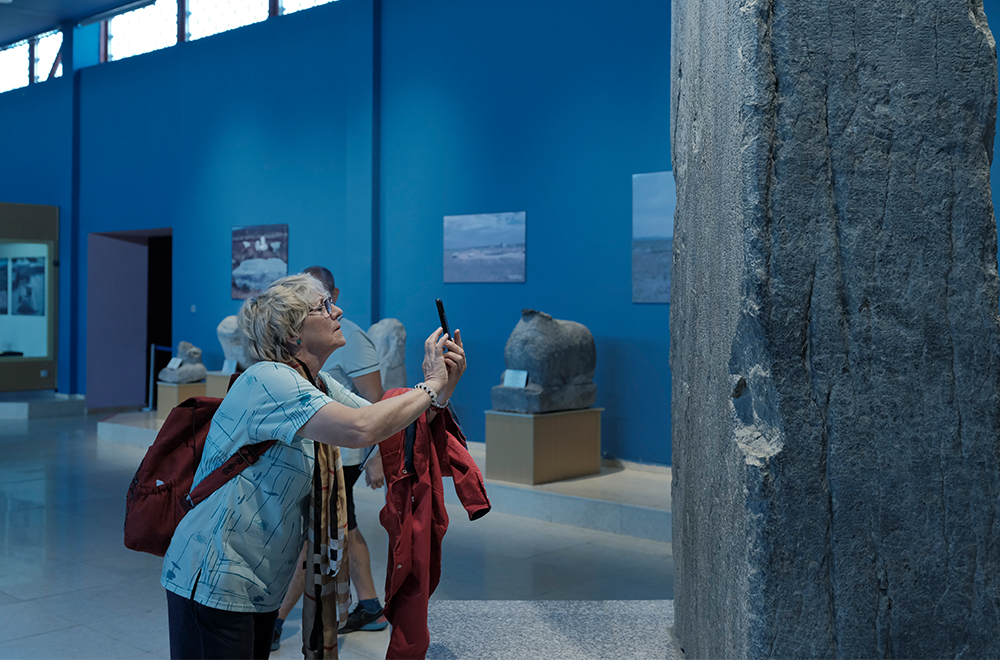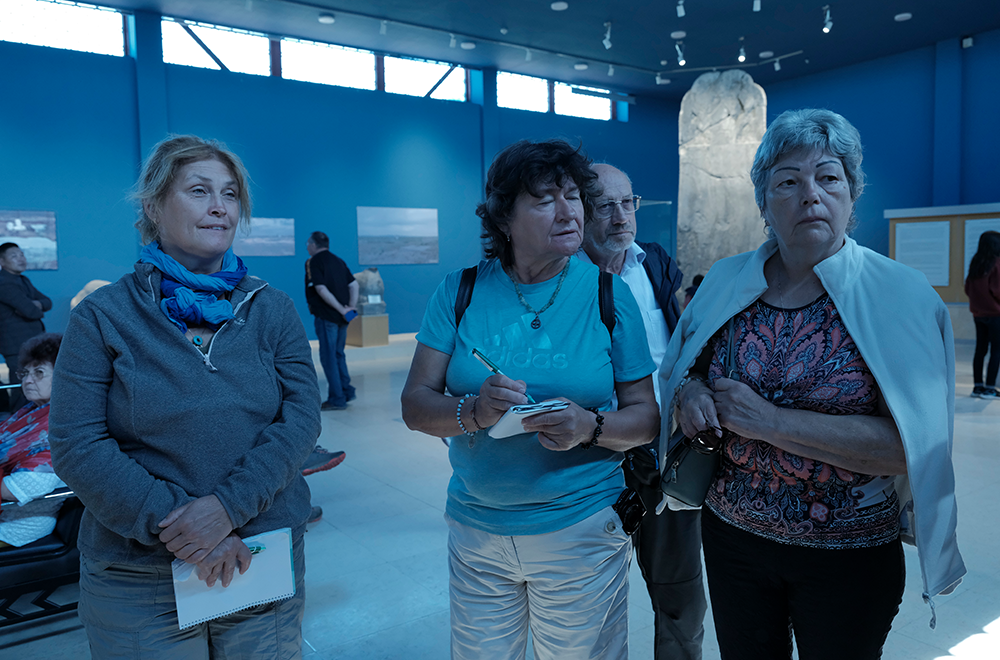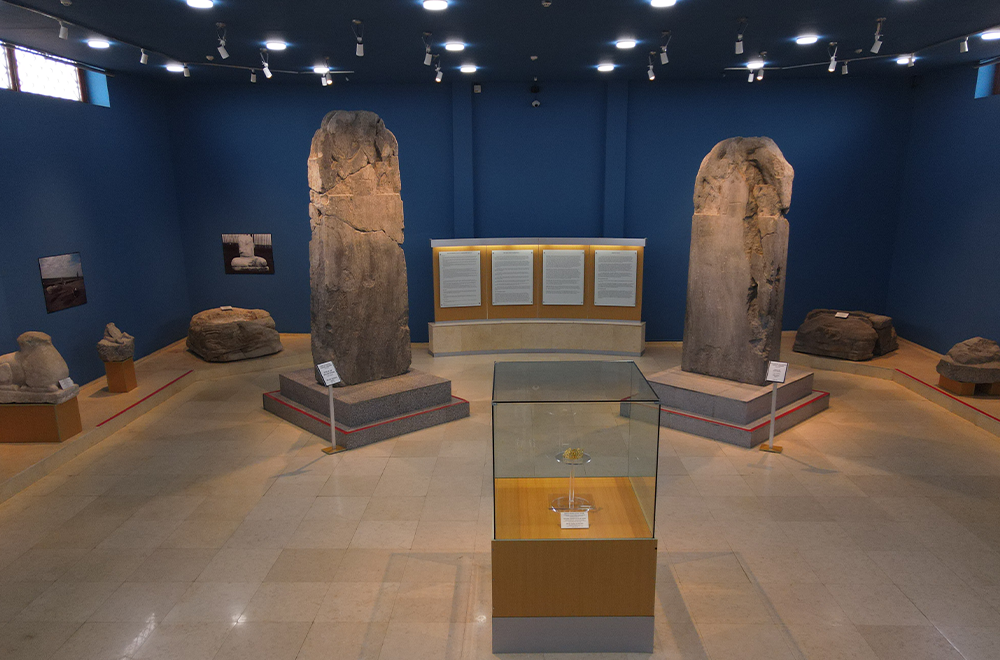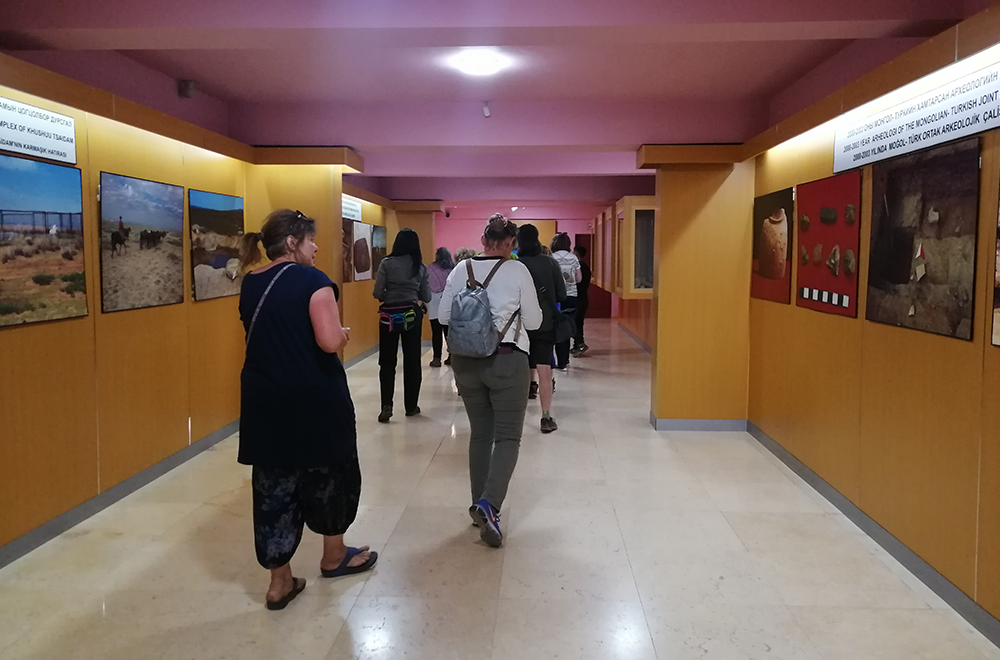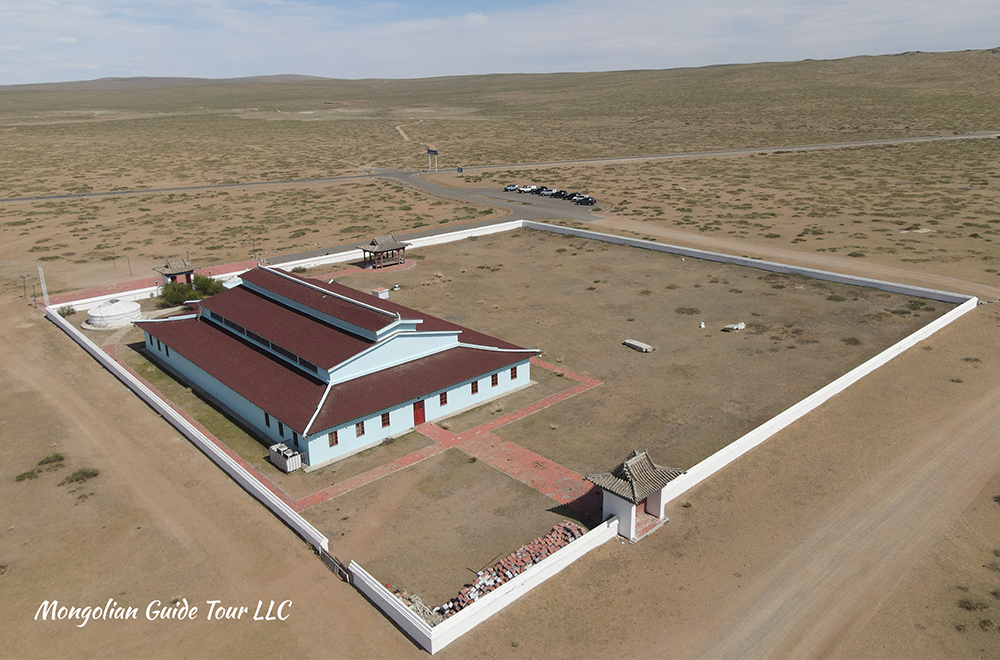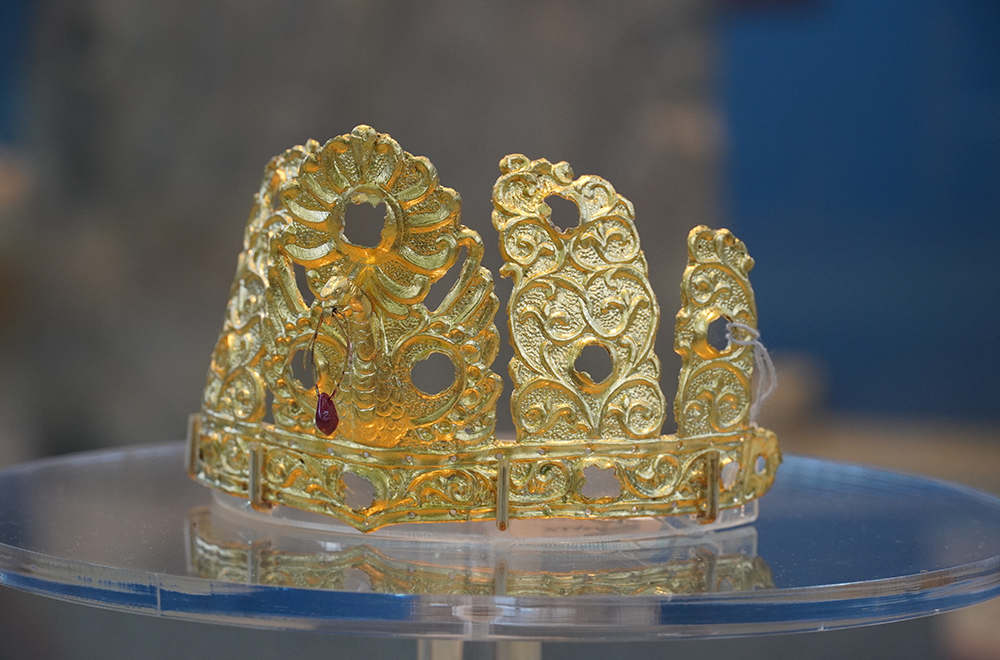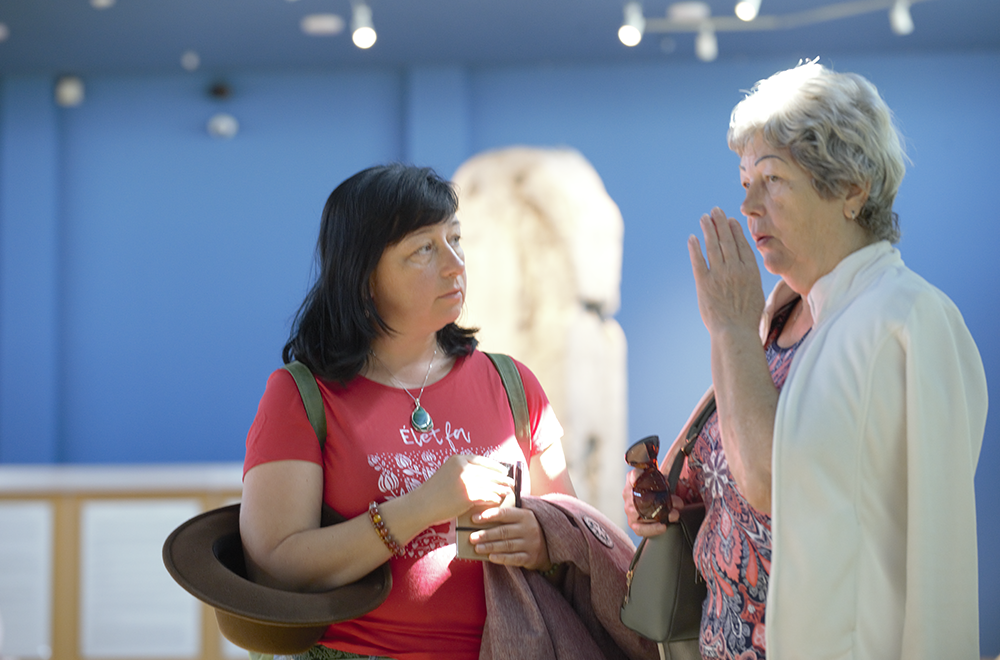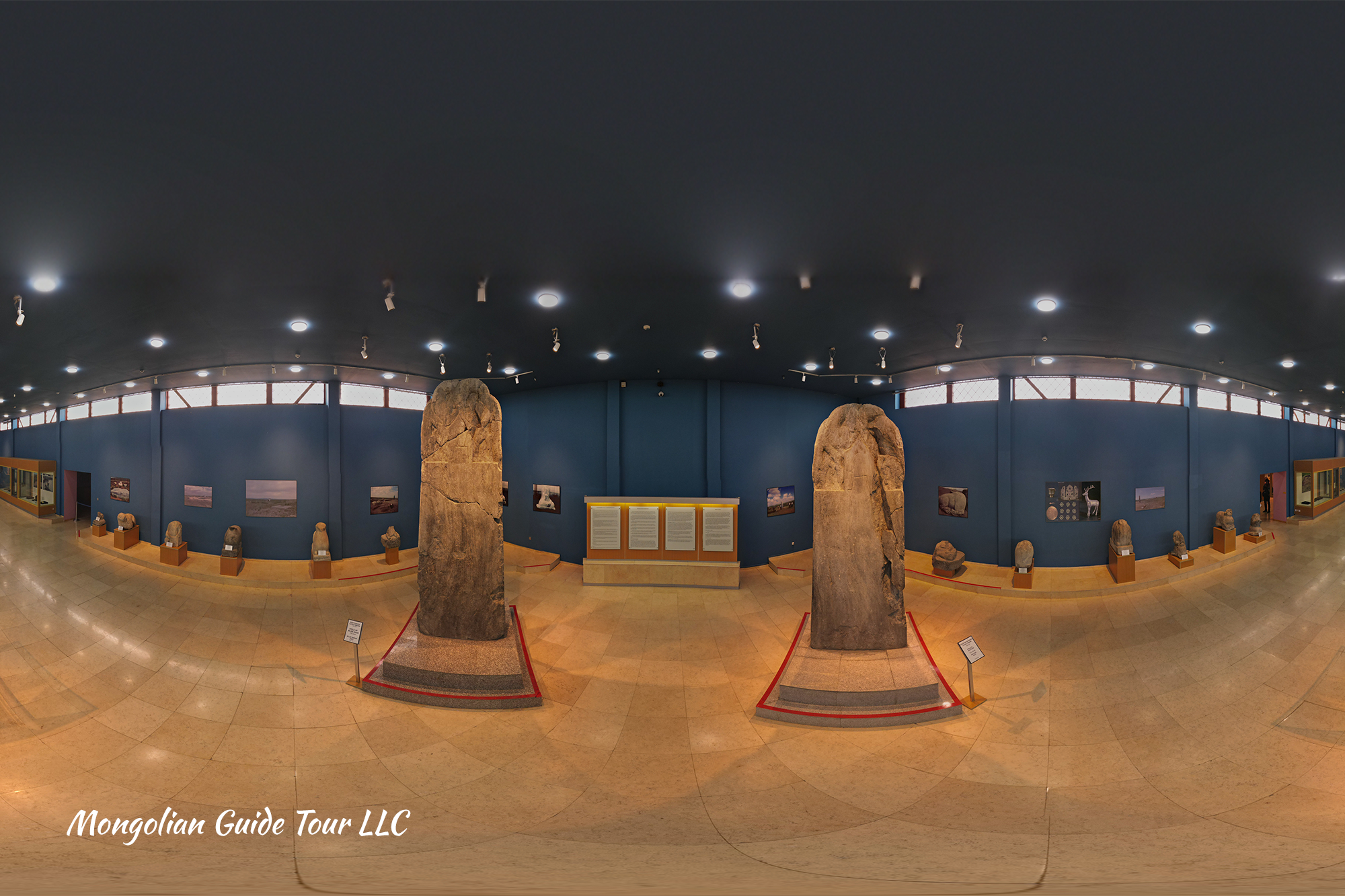
BILGE KHAN MEMORIAL COMPLEX
The complex is located on the east bank of the Old Orkhon River and southwest of Tsaidam Lake, 36 km southwest of Ugii Lake, and 47 km north of Kharkhorin, in the Tsaidam Bag area of Khashaat Sum of Arkhangai Province. It has been studied for over 100 years under different names such as “Khushuu Tsaidam Monument”, “Orkhon valley heritage”, “Kul Tigin Inscription”, and “Bilge Khan Complex”.First, in 1958, a Mongolian-Czechoslovak joint research team studied and excavated the complex entirely. Bilge Khan was the last king of Turks, while the intelligent and skillful military general Kul Tigin was his younger brother who served for his brother. However, this "sacrificial temple" facility dedicated to the two brothers has been significantly destroyed and damaged throughout the history of over 1300 years, the UNESCO registered it as a world cultural heritage in 1996 with the rank of "Outstanding Universal Value". In 1961, Mongolia had been sesignated this as the state special protection area with 20.8 square kilometers. Also, Ulaanbaatar city was settled for 14 years in the Khushuu Tsaidam valley, the place where the monument is located, and at that period the city settlement was called "Yellow Belt City".
WHO WERE BILGE KHAN AND KUL TIGIN? In 716, the second Khan (King) of the late Turkic Kaganate, Qapaghan Khan was killed by rebels in his palace on the bank of the Tuul river. The throne was to be succeeded by Elteres Khan’s oldest son Bilge (who was named “Tardush shad-Royal price” in 698). But the regents of Qapagan Khan gave the throne to his son named Begyu. Enraged at the defying of the traditional Lateral succession law, Bilge Khan's younger brother Kul Tigin attacked the palace and killed Begyu. He placed his elder brother Bilge on the throne, and himself became the lord of the left-wing and the commander-in-chief of the army. Bilge Khan, the son of Elteres Khan, was the last king of the Turkic Empire and ruled the empire for 19 years. Bilge Khan ascended the throne at a difficult time when the state established by his father was on the edge of collapse, the provinces under his jurisdiction rebelled and fought, and the main provinces of Turks were also in turmoil. Bilge Khan was troubled by all this and proposed to his younger brother Kul Tigin to succeed to the throne. But his younger brother refused to violate the tradition and law of succession to the throne. Later, the former Qapagan king’s relatives and close associates were deposed and killed by Kul Tigin’s order. Among them, advisor Tonyukuk the Wise (He was an advisor for three successive Khans in the Turkic Khaganate) was left in his status. It is said that Tonyukuk the Wise was not only Bilge Khan's father-in-law, but also a sage noble respected by the public. In this way, the two brothers put down the rebellion and united their forces with Tonyukuk the Wise to strengthen the empire. His younger brother Kul Tigin, a wise and talented military general, was born in 684 and died in 731 age of 47.
Kul Tigin’s memorial site: Kul Tigin died suddenly on 27 February 731. On 1 August 732, Bilge Khan erected a memorial complex in Khushuu Tsaidam, on carved stone turtles within walled enclosures in memory of his brother. The walls of the facility are 1 meter thick, 67 meters long, and 29 meters wide, built of bricks. Outside the wall was made an encircling protective trench, and the space inside the wall was covered with bricks size 32x32x6 cm. In the center of the facility, the Kul Tigin stele was placed facing the sunrise direction. The stele size was 383 cm high united with the turtle stone pedestal, 132 cm wide, and 46 cm thick. The upper part of the stele depicted a carved ibex (the emblem of Göktürk Khagans), decorated by a twisted dragon, and Runic inscriptions with 10,000 letters in 68 lines were carved on three sides. Researchers name the lines from 1 to 13 as a "small inscription" and lines from 14 to 68 as a "large inscription". The Old Turkic inscriptions on these monuments were done by Yollug Tigin who was the grandson of Kul Tigin General. However, some of the script was not preserved or was missing, and portions of the original message remain. Inscriptions’ most complete section highlights how the Turkic Khaganate was established, as well as General Kul Tigin’s participation in state affairs from the age of 16 and which tribes and countries he conquered, and how he fought. Also, what kind of horse he rode, how he worked hard both day and night for his country and made poor people and orphans rich while making the enemies kneel and bow down their head, establishing a powerful state ruling the vast land stretching from the direction of sunrise to sunset as a safe and peaceful place which without fear of being invaded or oppressed by others. Furthermore, it mentioned also Kul Tigin's brother Bilge Khan's mourning at the time of his funeral, and the guests who came from abroad to attend his funeral. There is also a Turkic inscription on the turtle pedestal of the monument, which was studied by scientist B. Bazylkhan in 1979, but some of the inscriptions were so faded that they could not be completely interpreted.
Bilge Khan Memorial Grave Complex: It is located about 1 km south from the memorial site of Kul Tigin General. Bilge Khan died on November 23, 734, and a sacrificial temple and a stele for him erected on July 22, 735. The inscription was carved by Kultigin's grandson Yolug Tigin, throughout sitting for 34 days. The stele is about 345cm high, 174cm wide, and 75cm thick. In 2001, Mongolian scientists excavated the sacrificial site of Bilge Khan. A total of 17 types of 1878 pieces of silver, 20 types of 78 pieces of gold, and 26 pieces of 6 types precious stone artifacts were found from the area between the large square stone of the altar and the newly discovered curbstone. These artifacts were placed in a 30 cm deep, 40 x 80 cm area stacked on top of each other. Among the discovered artifacts, there existed utensils, bowls, vases, pitchers, cups, belt ornaments, belt pendants, brooches, earrings, and belts in the mugs made of solid gold and silver for symbolic and decorative purposes. The most notable artifact was a solid golden crown with five floral patterned petals branching from a base and crafting a bird with wings outstretched on a central petal. The petal's bird was depicted from the upright front with a clear pink gem attached from its beak by gold thread. The crown's character was very similar to the dress which was on the head of the stone portrait of General Kul Tigin found in the excavations of 1958. The crown of Kul Tigin consists of five parts that wrap around the head, and on the front had a carving of a bird with wings spread. Based on these, it is likely that the nobles of the Turkic royal family wore a five-sided crown with the image of a guarding bird. Moreover, according to ancient nomadic worship, it is related to the belief that the soul of a person flies away as a bird after his death.
Also, flower-shaped gold plaques 48 and eight-petaled silver plaques 1822, which decorated the doors and altars of the temple, were uncovered from the place. The silver-wrapped handles, numerous silver objects that purpose was unknown, and 304 bronze nails were found too. The researchers believe that before the Uighur army attacked to destroy the Turks, the guards, who were protecting the royal memorial complex, collected the treasures of Bilge Khan's complex and buried them loosely in a hole less than one meter long and only 30 cm deep. When the enemies attacked and demolished the memorial temple, hidden treasures had been preserved for centuries until today under the avalanches of the facility.
Furthermore, among the crucial artifacts were clay pots, household and decorative objects made of iron, a part of a tiled roof, and trays. Especially on the broken tiles of the roof, there was a figure of nomads shooting with an arrow while galloping on horses (war scene). It was considered as important research finding. Moreover, there was discovered the square grave bed encircled by stone. Researchers concluded it as not a real grave, but a ritual symbol of the aristocrat's burial. Stone human statues in the vicinity realistically reflect the appearance, clothing, and ornaments of the people of that time.
Bilge Khan Inscription highlights …“My father Khan Elteres and mother Queen Elbilge’s blessing from heaven as the Turkic sky from above, the holy earth water from below, may the Turkic Empire not be destroyed and may it exist forever, my father Khan's (King’s) army turned into like a wolf and their enemy became like a sheep while on their campaign to east and west. As we united our force, we became over seven hundred men. The Turkic country was safe from the sky above and the ground below. Who expanded this country? Envisaging that the glory of the country raised by our ancestors does not deserve to perish, my brother Kul Tigin and I tirelessly worked while not sleeping at night and not sitting idle during the day and tried to make the country great until we died, and we made the country great… By the will of the Heaven, and because I was greatly deserving and it so brought it about, I brought the dying people back to life; for the naked people I found clothing, the poor people I made rich, the scanty people I made numerous. I have made the other, which has a Kingdom and a Khagan, stand higher. All the peoples in the four quarters of the world I have brought to keeping the peace and making an end of hostilities; they all have obeyed me, and serve me.”
The site, where kept these unusual historical monuments, is now protected by a fence with a building for research activities. The steles of Bilge Khan and Kul Tigin General, and other damaged human stone statues and monuments were being restored. For the storage of artifacts, the building for the museum established by Turkish investment. On the walls of the museum, there is a photo exhibition showing the story of the archeological research of these complexes. The museum also exhibits some artifacts found in Bilge Khan's tomb excavation in 2001. It is located along with the road from Kharkhorin to Ugii Lake, and the entrance fee is 5000 MNT.


